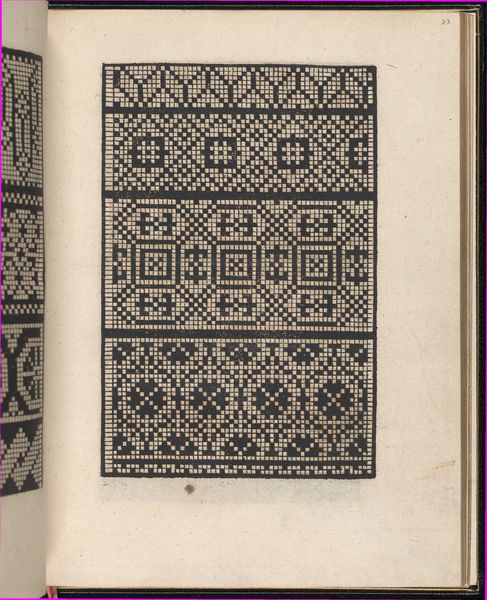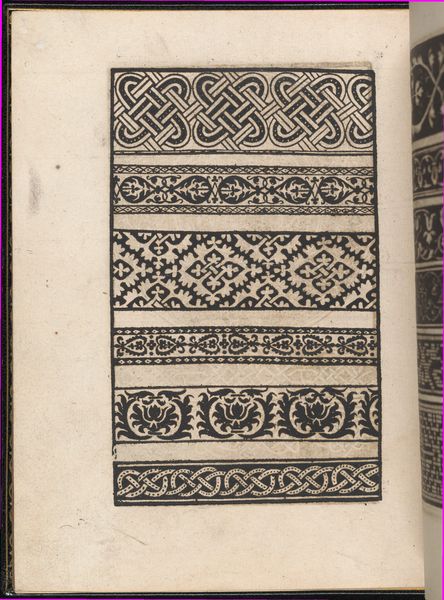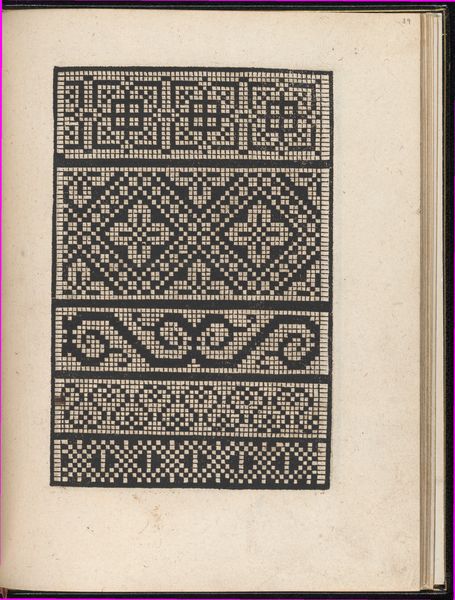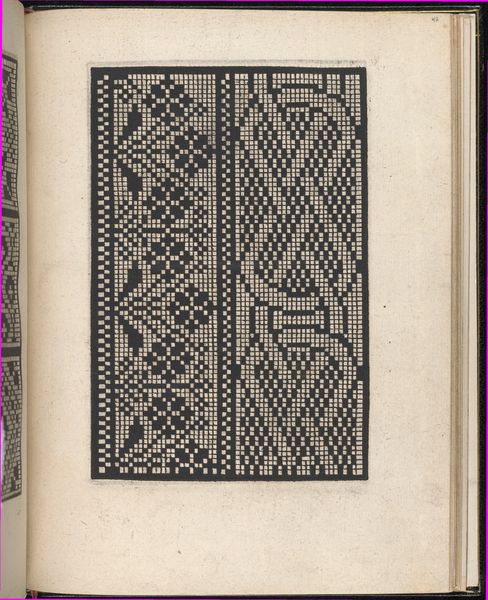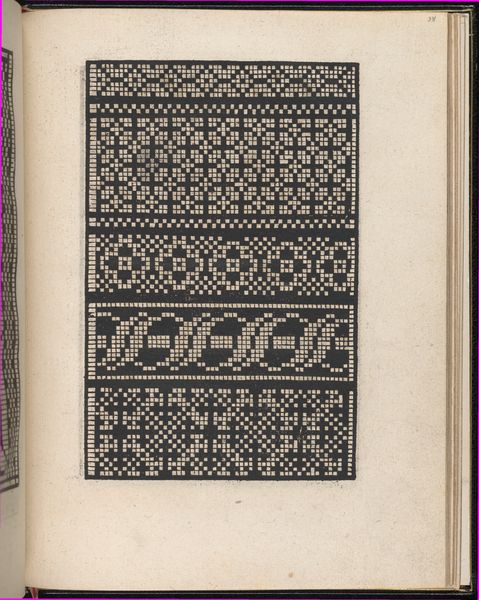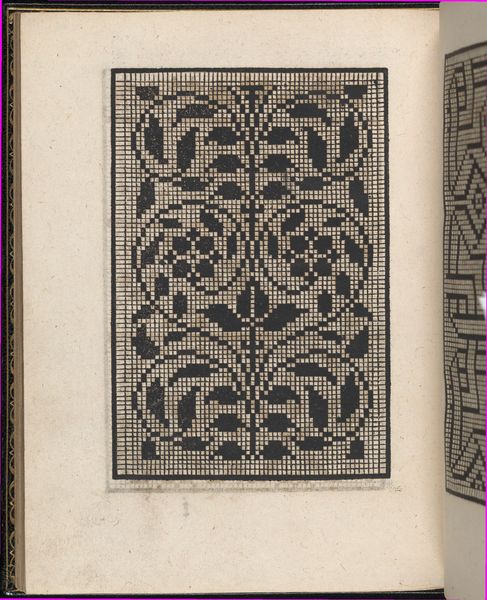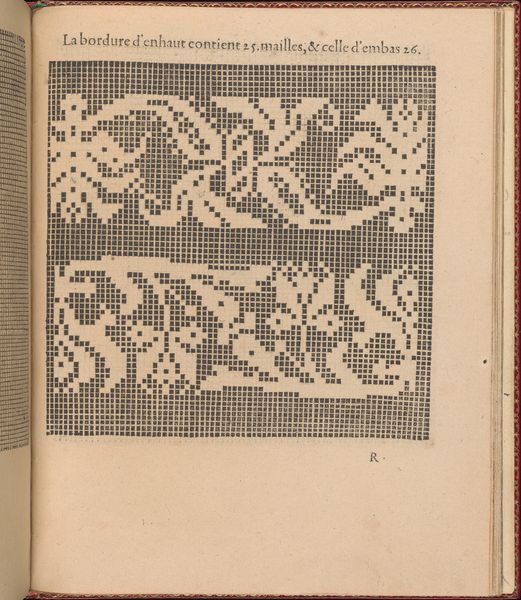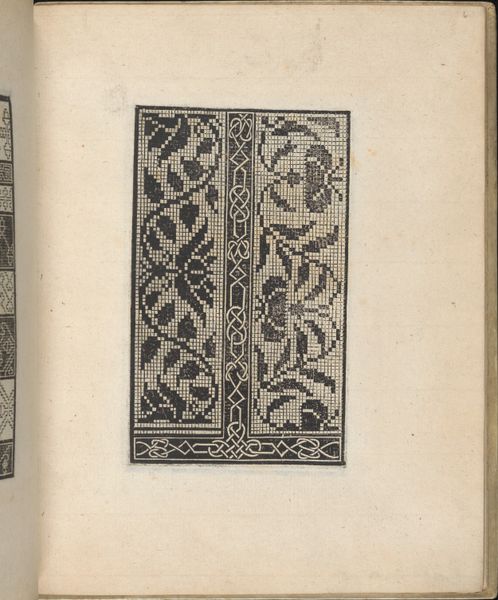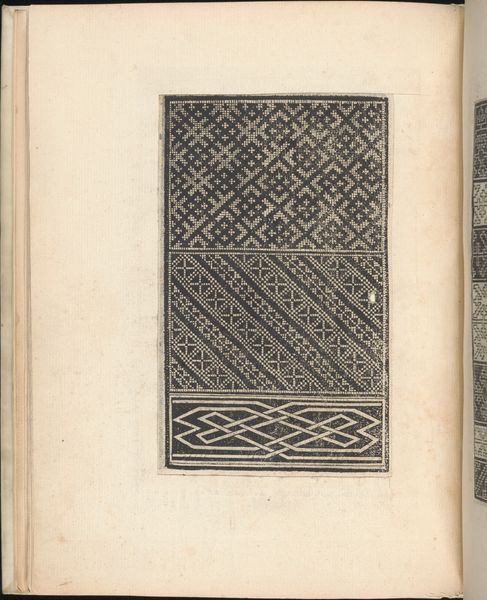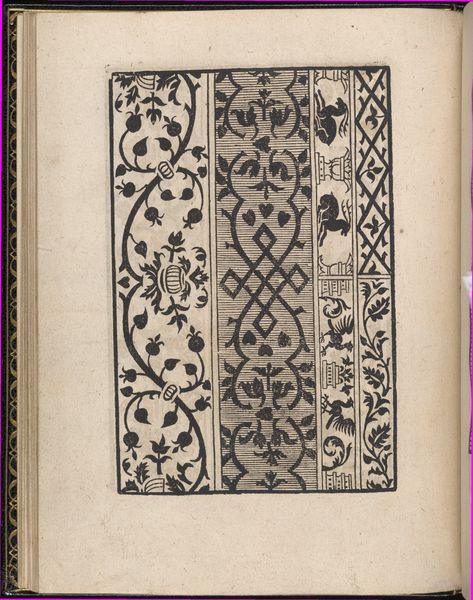
Page from Ein new kunstlich Modelbuch...(Page 20r) 1544
0:00
0:00
drawing, print, woodcut
#
drawing
# print
#
form
#
11_renaissance
#
geometric
#
woodcut
#
line
#
northern-renaissance
#
decorative-art
Dimensions: Overall: 7 11/16 x 5 7/8 in. (19.5 x 15 cm)
Copyright: Public Domain
Curator: What a beautiful sense of restrained elegance; almost meditative in its repetitive patterns. Like staring into a woven maze. Editor: Indeed! We're looking at a page from "Ein new kunstlich Modelbuch...(Page 20r)" by Peter Quentel, dating back to 1544. It's currently held in the collection of the Metropolitan Museum of Art. Curator: Quentel, you say? Fascinating. And this detailed patterning is achieved through woodcut and drawing, making it essentially a print meant to guide other makers? Editor: Precisely. Consider how these Modelbuch pages democratized design. Before widespread printing, these ornate patterns would have been exclusive to wealthy patrons with bespoke commissions. This is about material access to design. Curator: It is interesting to ponder how art has always been related to material production. One wonders if artists using similar techniques would be recognised at that time. Now I just wonder how contemporary eyes may perceive this, and the techniques used in the Northern Renaissance? Editor: Right. Let’s dive into how the labor of the artist shapes the end product. Look closely—see the distinct linear marks inherent in woodcut? Each precisely placed incision demanded skilled labor. This work blurred lines between craft, industry, and "high art" ideals, challenging them through mass production. Curator: It speaks of practical artistic work, yes? Someone following those patterns can create something beautiful even without artistic knowledge. Although it is the skill that would create it perfectly, one only needs the steps in principle. Editor: It also demonstrates how aesthetic appreciation shifted because suddenly, owning and creating opulent items was within the grasp of burgeoning middle classes through books like these. This transformed social structures by literally reshaping household aesthetics. Curator: Well, in all, this brief delve reminds us of art’s entwined relationship with labor and utility! Thanks for expanding my awareness and material-based curiosity on that fascinating piece. Editor: Likewise, it is refreshing to feel connected to past craftspeople who once looked to this very book for design inspiration. Something almost poetic.
Comments
No comments
Be the first to comment and join the conversation on the ultimate creative platform.
